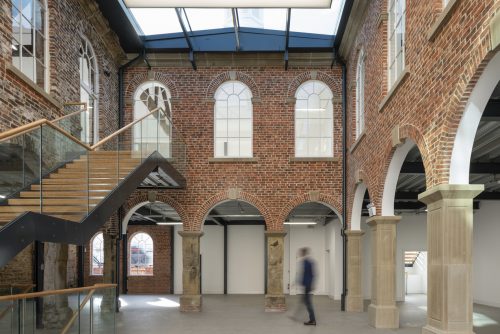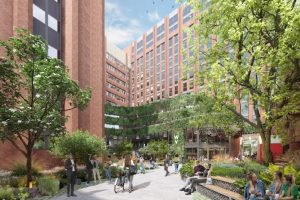The key role of heritage in regeneration

By James Lewis, Leeds studio lead at Buttress
High streets across Yorkshire were in crisis long before the pandemic struck. Its impact, however, has, in many places, accelerated their decline. As the country begins to put the pandemic behind it, we need to ask ourselves how high streets can best serve their communities, both now and in the future, and what economic, social, and cultural tools we can employ to revive town centres across the region.
The answer to this question is complex and will need to address a range of issues. Our heritage, however, does have a role to play.

James Lewis, Leeds studio lead, Buttress
Restoring local heritage is an effective way of enhancing the unique character of an area and creating a point of interest that captures a community’s imagination and attracts people to a place. Just look at the Piece Hall in Halifax for an example of how a heritage asset has been successfully re-used to promote tourism and generate investment.
That said, the restoration of the historic environment doesn’t always have to be large in scale to have a widespread impact. For town centres, the careful integration or enhancement of historic buildings – even on an individual scale – can play an important role in wider regeneration schemes.
At Buttress, we have recently completed the restoration of Grade II* listed First White Cloth Hall on Leeds’ Kirkgate. The building is the oldest commercial building in the city but had spent 20 years registered on Historic England’s At Risk Register, having fallen into severe decline. Along with developers Rushbond, we have carefully restored the building to create a space fit for 21st century use while ensuring that as much as the surviving fabric is retained and that’s history continues to be intrinsic to the building’s character. The finished project has not only given new life to a landmark building in Leeds’s history, but it has made a unique and significant contribution to the ongoing regeneration of the Kirkgate neighbourhood.
Historic buildings also offer fertile ground for temporary or ‘meanwhile’ uses within town centres. There are examples across the country where vacant historic buildings have been used to as temporary food halls, music venues or to provide other cultural experiences. Using buildings in this way not only injects life and vibrancy in these spaces but also encourages footfall into forgotten parts of town, kick-starting the permanent and sustainable development of the high street.
However, as with any historic regeneration initiative, it’s important to remember who it is for. Heritage buildings aren’t just bricks and mortar, they form part of people’s lives, memories, and stories. Making heritage assets a focal point for development can go beyond the regeneration of buildings and places; it can bring together communities and can foster a sense of ownership that encourages repeat use.
Breathing new life into heritage assets can be a time-consuming and complex process but having worked with historic buildings for more than 30 years, it’s a challenge Buttress is adept to overcome. Our experience has taught us that through the considered and carefully management of change, historic buildings have the potential to reshape our towns and cities, create a rejuvenated sense of place, and a better quality of life.









